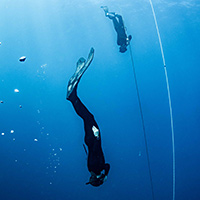The end of field seasons always bears a bittersweet feeling, relief mixed with sadness. Here is a summary of the 2017 season…and our favorite pictures.

This season saw a few new developments, which we were eager to test.
The biggest achievement of the season is by far the introduction and implementation of the Code of Conduct. I previously wrote about the reasons behind the urgent need to adopt a code of conduct, and its introduction eventually was accepted by the majority of operators. On certain occasions I decided to visit operators on a one to one basis to further explain why the code of conduct is necessary, and this approach paid off, both on a personal and professional aspect. While we still experience difficulties with one operator in particular, the atmosphere is drastically different on the water, leading to longer encounters with whale sharks, and safer interactions. A big thank you to all the operators who played the game this season!


We also welcomed our first volunteer helpers, as part of a programme that we developed together with our partners at MADA Megafauna. We welcomed a total of 7 people, who were trained by myself and joined our friends at Baleines Rand’eau daily on the water. The idea behind the programme was to offer a unique experience by providing guaranteed trips at sea, in addition to scientific training so that volunteers would eventually be acting as scientists while on the water and collect extra data when possible. The programme prove to be a huge success, and has more than doubled the amount of data our core research team, comprised of myself and a research assistant, would usually collect. We met a variety of characters and personalities, and are forever thankful for the efforts, energy and commitment of our volunteers! A big thank you Kelly, Carole, Fanny, Arnault, Michael, Mylène and Guillaume! We also welcomed project supervisors Dr. Simon Pierce and Dr. Jeremy Kiszka, guests Hanli Prinsloo, journalists from various TV channels…

Thanks to wider efforts this year, with up to 7 boats per day during peak season, our team managed to record a whooping 327 encounters, which amounts to 107 different individuals passing through the waters of Nosy Be this season! Of these individuals, I recognised about a quarter (final numbers are currently being processed), meaning the area is witnessing a high turnover rate between seasons. Our beloved Michel is still around, as well as regulars Cléandre, Clasperfin, Ernest and Théodore, for example, who we know since 2015. Newbie Sirius possibly might have become the new star of Nosy Be. We were lucky to witness four whale sharks at a time on one day, and pairs of individuals swimming together were often sighted in late November. The presence of females was rare, and only 16 female individuals were identified through the season. We also collected biopsies, and were lucky to witness whale sharks vertical feeding on many occasions (see below, when the shark adopts a vertical position to capture more preys present at the surface).





This season was spectacular in terms of megafauna encounters. Giant oceanic manta rays (Manta birostris) unexpectedly gathered in numbers in both September and December, for a few days at a time, and were found feeding on krill in specific areas, together with smaller mobula rays. Omura’s whales still abound and feed in the waters of Nosy Be from November onwards, and the presence of leatherback turtles was observed during 10 days in November, very probably linked to the high density of jellyfish at that particular time. While the species has been previously seen in Nosy Be, their widespread presence at the surface was definitely a highlight of the season!


Finally, our team managed to find some time to further raise awareness about sharks and our work in Nosy Be. We are looking at widening our efforts to reach more communities on the island after the encouraging results!

It’s been a busy, yet incredible season. I want to personally thank Elina, Juliet, les Baleines Rand’eau, supervisors Simon and Jeremy, the MWSP field team: Vincent, Josh, Kelly, Carole, Fanny, Arnault, Guillaume, Michael and Mylène, project friends David and Simone, Clare, Chris, Sal, Courtney, Jacques, Fanja, Ralph and the team at Senga, for all their help and support. Now back to data analysis and preparing next year’s season! We have also launched eco-friendly clothing merchandise items that you can purchase here.
Again thanks to our funders Lush, Idea Wild, Aqua-Firma, MMF, FIU, MADA Megafauna, Les Baleines Rand’eau for making this work possible.
All photos are property of the Madagascar Whale Shark Project, and were taken by David Robinson or myself.

 décembre 31, 2017
décembre 31, 2017